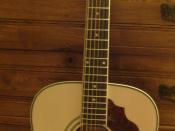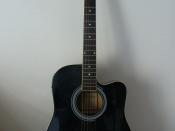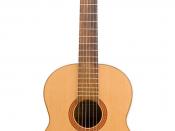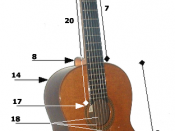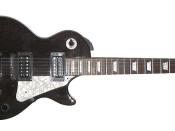Choosing the Best Acoustic Guitar for You
With the virtually endless choices of acoustic guitars on the market today, it is no surprise that deciding on one can be a daunting task. This article has been designed to help ease the process by logically guiding you to the best possible acoustic guitar for your needs. The single most important factor to consider when buying an acoustic guitar is its ability to stay in tune. The primary function of an instrument is to hold a constant pitch and the guitar is no exception. A worthwhile guitar should keep in tune whether it is caressed gently with a finger or plucked violently with a plectrum. A guitar that cannot stay in tune is not a fully functioning instrument and will cause problems for any musician. The second most important factor to consider is the style of the neck. The neck of the guitar will be the most intimate to you.
Playing the instrument should feel natural and nothing should hurt. It should be a pleasure to play. Wide frets accommodate wider fingers, high fret wire encourages a more delicate touch, and a flat radius enables faster picking. Search for a comfortable neck that enhances your unique style. Thirdly, the wood plays an important factor in the tone and timbre of the guitar. In general, solid wood guitars sound much fuller and well rounded than guitars made from laminated woods or pressboards. Solid wood guitars are also much more dynamic and responsive to the touch. However, about 80% of a guitars tone comes from the spruce top piece and many great sounding guitars have solid spruce tops with laminated backs and sides. Different species of wood produce different sounds. The most common woods used for the backs and sides are mahogany and rosewood. The rosewood sounds deep and rich with a fast decay, while the mahogany has a warm and creamy sound with smooth sustain. You must try a variety of guitars and hear the different woods for yourself. The next factor to consider is the style of the body because it is directly related to the way a guitar projects sound. Different body shapes and sizes were developed with certain playing styles or circumstances in mind. A dreadnought body emphasizes chords and is great for strumming, while a concert body style emphasizes single notes and compliments finger picking. The larger the guitar the more pronounced its bass frequency will be. You should also consider the price of the guitar as it is often a limiting factor in the decision process. You should note that pricing is not directly related to the quality of an instrument. Brand names play a large role in the pricing of guitars. And different woods can cost more money if they are rare or imported. For example, East Indian rosewood is less expensive than Brazilian rosewood. The very last thing to consider is the appearance and vibe of the guitar. An instrument is essentially an extension of one's self. Since you will be using the instrument to express your individuality it should compliment your attitude and unique style.
